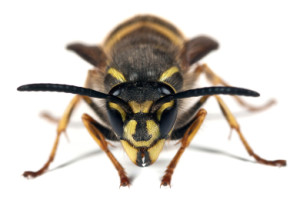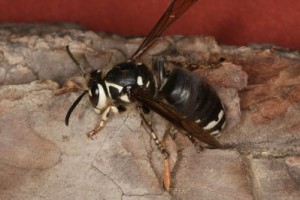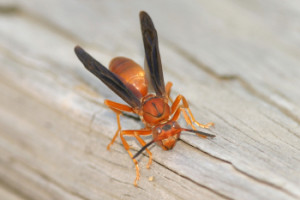
A brightly colored variety of wasp
ColorYellow and black striping throughout its body, possibly with white or red coloring
Size1/2 – 5/8 inch
HabitatThe nests are almost always in the ground but in urban areas they may be in buildings/artificial cavities
Interesting FactsSome species of yellow jackets have three distinct dots on their faces

A large, stinging insect without the yellow coloring
ColorWhite and black striping throughout its body
Size1/2 – 1 inch
HabitatThe Bald Faced Hornet lives throughout North America and is most common in the southeast
Interesting FactsThe bald faced hornet is closely related to the Yellow Jacket but is much more aggressive

Variety of wasp with shorter bodies, transparent wings and a range of colors
ColorFrom black and yellow with stripes to almost solid reddish/orange
Size3/4 – 1 inch
HabitatThey build paper-like nests in trees or on/hanging from buildings
Interesting FactsRecent research has shown that paper wasps have facial recognition abilities close to the level of most humans